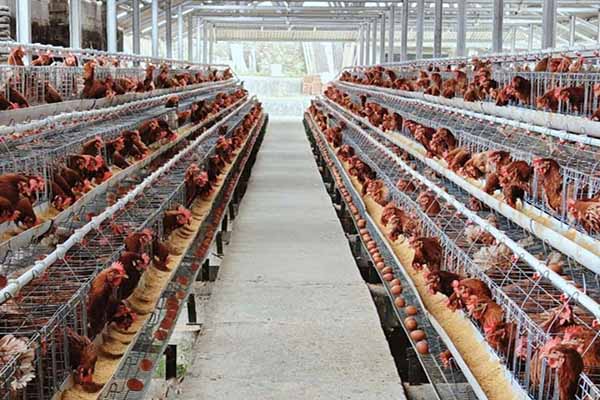Cage Setup for 50,000 Egg Laying Hens: A Comprehensive Guide
Overview of Cage Setup for Large Scale Egg Production
To ensure efficient and profitable egg production on a large scale, such as with 50,000 egg-laying hens, a well-designed cage setup is essential. This article outlines the key considerations and components for creating an optimal cage setup for such a significant number of hens.
1. Space Allocation
The space allocated to each hen is crucial for their health and productivity. For 50,000 hens, a standard of 0.8 square meters per bird is recommended. This ensures enough space for movement and reduces stress.
- 0.8 square meters per hen
- 5 meters in length, 2 meters in width, and 1.5 meters in height for the entire cage system
2. Cage Design
The design of the cages must accommodate the needs of the hens, including nesting, roosting, and feeding areas. Here are the key components:
- Nesting Boxes: Each hen requires a nesting box. For 50,000 hens, you would need approximately 5,000 nesting boxes, ensuring privacy and reducing the risk of egg-eating.
- Roosting Bars: Provide at least one roosting bar per hen. Ensure bars are at an appropriate height to encourage natural sleeping behavior.
- Feeding Areas: Install automated feeders that dispense feed evenly. Ensure that feeders are easy to clean and maintain to prevent disease spread.
3. Environmental Control
Maintaining the right environment is crucial for the health and productivity of the hens. Key environmental factors include:
- Temperature: Keep the temperature between 18-23°C (64-73°F) for optimal laying performance.
- Humidity: Maintain humidity levels between 50-60% to prevent respiratory diseases and reduce ammonia levels.
- Air Quality: Ensure good ventilation to remove ammonia and other harmful gases from the air.
4. Health and Management
Regular health checks and management practices are essential for a successful egg production setup. Consider the following:
- Vaccination Programs: Implement a comprehensive vaccination program to protect against common diseases.
- Feeding Regimen: Provide balanced nutrition to support health and productivity.
- Water Supply: Ensure a constant supply of clean water to prevent dehydration and reduce mortality rates.
5. Cost and Return on Investment
Investing in a well-designed cage setup for 50,000 egg-laying hens can be costly, but the returns can be substantial. A well-managed setup can yield an average of 300-350 eggs per hen per year, translating to a total of 15-17.5 million eggs annually.
Conclusion
Creating a cage setup for 50,000 egg-laying hens requires careful planning and investment. By considering space allocation, cage design, environmental control, health and management, and the financial aspects, you can set up a successful egg production facility.
For more detailed information and a free cage design and equipment quote, please leave a comment below or contact us directly. Our experts at LIVI Mechanical are here to help you get started on your journey to a successful egg production operation.





